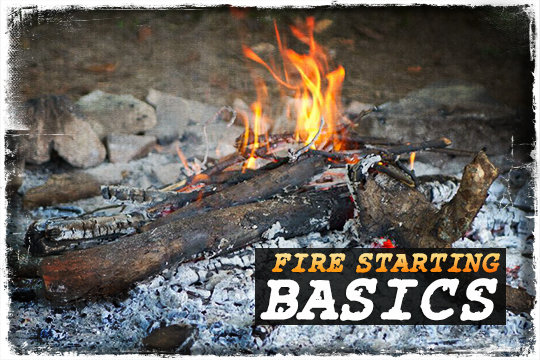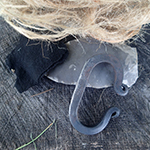
A previous article discussed the basics of wilderness survival, the basics meaning simple and straight forward. Information to get you started, and information that can actually save your life. No fancy tricks, and no years of training needed to learn the basics of surviving long enough to be rescued.
Once you know the basics however, you can then build upon them. You will need practice to gain confidence, so that you can actually change the environment around you allowing you to survive in it.
Some of you may be thinking that you already know the basics, so why bother reading the rest of the article. Well you may know it all, but others may not, and some may never admit that they really do not know. Some instructors may assume that everyone that comes to the class or that sits in the audience has a certain level of training or knowledge, but this is a mistake.
An inexperienced instructor may believe they would insult someone by pointing out the obvious, and in fact, some people may be insulted. A person may wonder if the instructor assumes they are stupid by going over things that anyone would know, things that even the most inexperienced would understand. This is the students’ problem however, and not the instructors, the instructor is not there just for that one person but for all, and for all levels of knowledge and training.
Not everyone knows, and besides a refresher course never hurt anyone. You do not watch a video on brain surgery and then expect to be able to perform it, so it does take time to learn and it takes actual hands on practice to become good at anything.
With all the technology, available today people naturally assume they know more than they actually do, and often times it takes a crisis for some to realize they know very little if anything at all.
When instructing someone a good instructor starts with a clean slate. This means that you teach at the lowest level possible. Just because something is obvious to you does not mean it is obvious to someone else.
Some people tend to think that others think like them, and have the same basic understandings that they have. This is rarely the case however. People get this idea because they associate with the same people day in, day out, and no one ever disputes or discusses things. Nothing ever comes up where survival knowledge is put to the test. Some may never expand their circle of friends or their circle of knowledge.
Assuming someone knows the same basics that you know may put you in a dangerous situation when you are working with others, and in particular, if you find yourself in a survival situation where you may have to rely on others for your survival.
Do You Know What Flint Is

Flint is a hard, sedimentary cryptocrystalline form of the mineral quartz and it is a variety of chert. It has a glassy or wax appearance and the inside is usually dark gray, black, green, white, or brown in color.
For hundreds of years flint and steel has been used to create fire. When flint and steel come together, small particles of iron are exposed from the strike. The iron then mixes with oxygen, which in turn creates a spark that can ignite dry tinder.
Flint is not the same as Ferrocerium and yet most lighters state they use flint. In most cases, the so-called flint inside of a lighter is the manmade metallic material called Ferrocerium. Ferro rods are made from Ferrocerium and the spark rod attached to a magnesium stick is Ferrocerium as well.
Ferrocerium creates a very hot spark, (3,000° F) much hotter than the spark created by flint and steel. Ferro rods actually create burning pieces of metal when scraped, which makes it much more efficient that striking flint and steel for fire starting.
Ferro rods are not struck with a piece of metal however, because this will damage the rods. To create a spark you apply downward pressure while scraping along the surface with the backside of a fixed bladed knife for example. You can also pull the rod up along the blade. Some believe this allows the user to better direct the spark downward.
If using a folding knife blade make sure it is locked. You do not want to use the back of a knife blade that can fold up on your fingers. Some use the sharpened edge, but logic tells us this would dull the edge, but the sharpened edge will work if you find that you need to use it.
Magnesium

Magnesium is the eighth most abundant element in the Earth’s crust and the fourth most common element on earth. It occurs naturally in combination with other elements. It is not manmade and yet people confuse it with Ferrocerium.
Even retailers will advertise Ferro rods as magnesium rods. One reason for the mix up is that Ferro rods do produce hot flakes of metal that are ignited by the scraping and by oxidation, but Ferro rods are not scraped to produce shavings that then need a spark for ignition. Magnesium flakes are highly flammable, and do need a spark to ignite the shavings.
Magnesium burns at over 3,000° F and the purity of the magnesium can change the burn temperature. Look for quality when choosing, because the cheaper magnesium sticks will have more nickel and other alloys mixed in reducing the effectiveness.
To use you simply scrape the magnesium stick to create a small pile of magnesium particles. Scrape the particles over dry or even damp tinder. Then use the spark rod attached to create the spark, or use a Ferro rod or flint and steel to ignite.
Magnesium is impervious to water and temperature changes making it an ideal fire starting tool for any environment. The cost is relatively cheap under 10 dollars in many cases, and the quality ones are only a few dollars more.
Fire starting is only complicated when you do not have the right materials, and there is no reason not to ever have a Ferro rod and a magnesium stick on your person at all times. They can be attached to your key chain, worn around your neck or slipped into a pocket. Carry these items everyday and you will always be able to create a fire in any environment.
Exotic fire starting methods are great when making a video or playing around in your backyard but when a frigid wind is blowing or when it is raining or snowing, you want dependability.
Bow and Drill
The bow and drill is a proven method of fire starting, but it is labor intensive, and it requires hours of practice. Being experienced with the bow and drill however, is no guarantee you will be able to create a hot ember. The bow and drill use friction and wood particles to create a hot ember, which in turn is used to ignite dry tinder.
The key element is a dry fireboard and spindle or drill. The fireboard has a small depression where the drill rests and spins to create heat by friction. The spinning creates fine sawdust from the fireboard and spindle, which is ignited from the friction, if the fireboard or spindle is damp, then no fire.
You can make a bow and drill from what you find in the wilderness. However, finding a dry seasoned spindle and fireboard may be another matter. You can make a spindle and fireboard now to carry in your pack. Once in the woods it is a simple matter of finding a bow. You will of course need cordage as well.
To ensure you have dry tinder at all times, carry it with you at all times. Cotton balls, wood shavings, dried grasses and so on make ideal tinder, and they easily fit anywhere in your pack or pocket.
Do not make it complicated and it will not be complicated. When lost or stranded is not the time to experiment. You want to know before you get into a situation that the tools you have, do work as intended, and that you know how to make them work as they are intended to work.